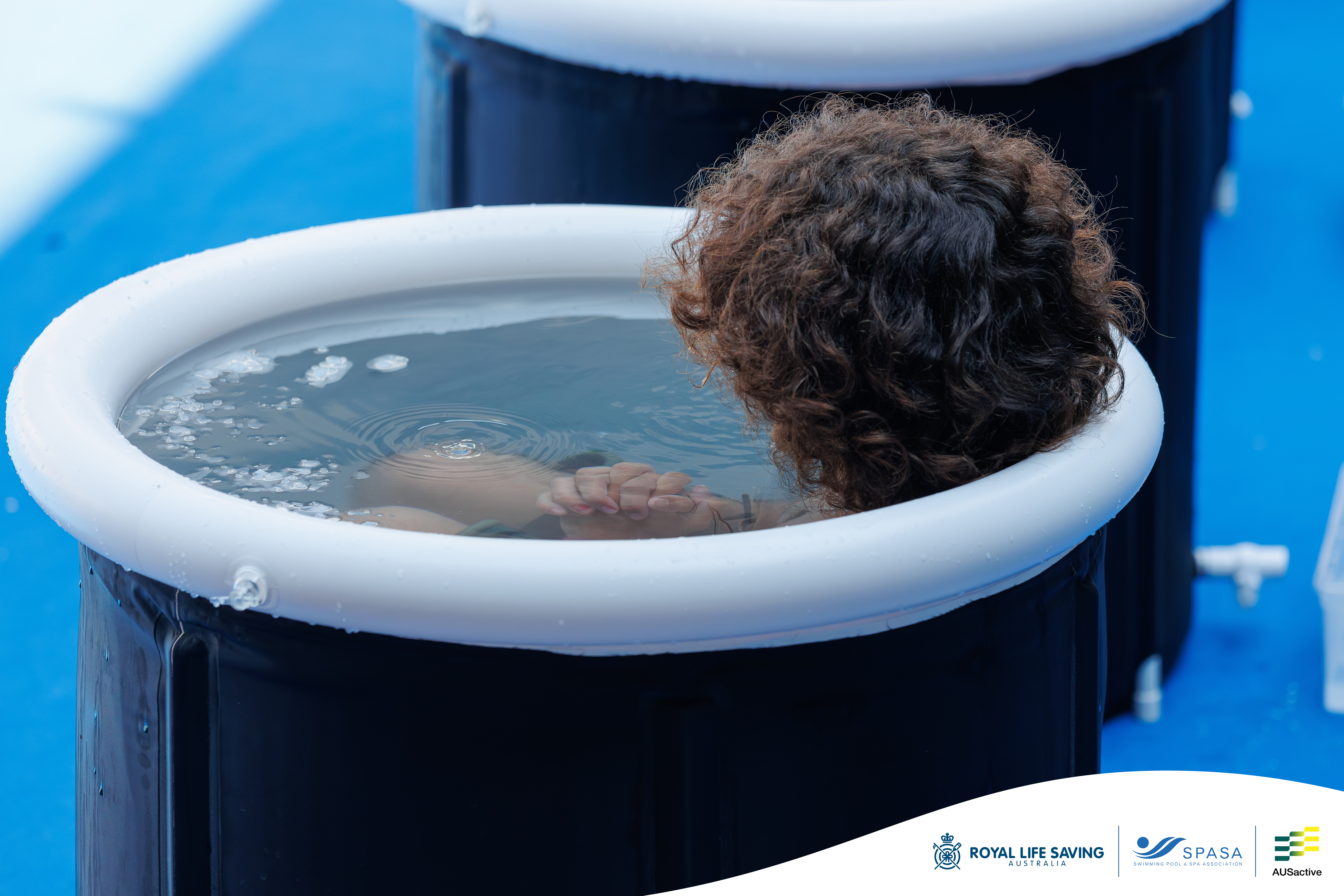POSITION STATEMENT ON COLD WATER IMMERSION THERAPY SAFETY PRECAUTIONS IN AQUATIC, FITNESS AND LEISURE SETTINGS
This position is current as at 26 February, 2024.
Background
Royal Life Saving, AUSactive and SPASA have been monitoring the increasing popularity of Cold Water Immersion (CWI).
CWI (also referred to as cold water therapy or cryotherapy) can be defined as exposing the body to cold water for various claimed therapeutic purposes. The water temperature is usually between 10-15 degrees Celsius, although can be as low as zero degrees Celsius in open, natural water environments. The claimed therapeutic benefits are interlinked and include a stronger cardiovascular system, improved recovery from physical exercise, reduced inflammation, improved immune system functioning, and enhanced mental well-being.
CWI can take place in a range of settings, such as sports and aquatic facilities, fitness centres, commercial gyms, wellness centres, physical therapy and rehabilitation centres, during personal training sessions, in natural water environments such as rivers, lakes or oceans, or at home in the bath or hot-to-cold shower. It may be under the guidance and supervision of a health professional or sports coach, within a client-operator fee for service arrangement, or completely independently and without anyone else present.
The position statement is limited to guidance and advice on safety considerations for users and providers of CWI programs. It does not provide guidance on cold water swimming, the design or construction of facilities, e.g. tubs or pools, used for CWI, or the systems and equipment used to manage the water quality. However, these are also areas that warrant careful consideration and seeking out separate expert advice.
Position
The principles of quality professional exercise facilities and programs, aquatic safety and drowning prevention underpinning this position statement apply to the full range of settings and contexts of CWI. The advice is chiefly applicable to those organisations or individuals who have a duty of care to anyone participating in CWI.
It is important to recognise that CWI comes with risks and that safety must be paramount. As with any aquatic activity there is an inherent risk of drowning. This risk may be elevated in certain individuals due to the physiological and psychological responses associated with CWI, which include but are not limited to:
- Shock responses - hyperventilation, increased heart rate, increased blood pressure, and, in extreme cases, cardiac arrhythmias
- Respiratory changes / gasping – increased risk of gasping and inhaling water due to loss of breathing control
- Cramps and muscle spasms
- Hypothermia and/or frostbite – as a result of excessively cold water or prolonged exposure
- Panic attack
Royal Life Saving Society – Australia, AUSactive and SPASA advise that CWI can be conducted safely, by adhering to the above advice, and applicable laws, codes of practice, standards and industry guidelines. However, there remains a potential risk that an adverse incident could occur and vigilance is required.
The below steps should be taken to reduce the risk and maximise safety when facilitating or participating in CWI:
- Screening and Assessment: Participants should undergo a pre activity screening to identify any contraindications or underlying health conditions that might increase their risk during CWI. It is advised that pregnant women, individuals with any chronic or serious illness, or that are on certain treatment programs or medications and/or with heart problems, circulatory issues, high blood pressure, autoimmune disorders, or increased sensitivity to cold (Raynaud’s disease), are at an elevated risk.
- Informed Consent: Participants should receive a comprehensive briefing on the potential risks and benefits of CWI. This information is vital in ensuring participants understand what to expect and the precautions they should take and therefore should obtain medical guidance before commencing CWI activities.
- Preparation and warm up: Participants should be trained in how to regulate their breathing during CWI to minimise the risks associated with shock response. Participants should also do adequate warm-up/down before and after CWI to minimise the risk of hypothermia and injury.
- Acclimatisation: Cold water exposure should begin with shorter durations and gradually progress as the participant's tolerance increases. In the context of cold plunge pools, the neck and head should remain out of the water at all times.
- Water Temperature: The water temperature should be carefully monitored and controlled. It should not be so cold as to cause extreme stress on the body. A temperature range of 10-15°C is generally considered safe for most individuals. Colder temperatures can be used but this increases the risk of extreme stress on the body and appropriate risk reduction steps are strongly advised.
- Risk Assessment: A thorough risk assessment should be undertaken, and the outcomes should feed into the organisation’s broader risk management plan and other critical safety systems such as emergency management and supervision planning, where applicable.
- Supervision: In the context of an aquatic facility, a qualified and trained professional, e.g. a Lifeguard, should be present at all times to monitor participants, provide guidance, and respond to any adverse reactions or incidents. The supervision arrangements should be documented in the facility’s supervision plan.
- Emergency Management: Well-established emergency procedures should be in place and regularly practiced. The emergency plan should document the roles and responsibilities of those responsible for supervision and response as well as access to rescue equipment, oxygen, defibrillators, blankets and medical support.
- Sanitisation: The water in CWI may require appropriate sanitation dependent on bather load, filtration, and circulation to maintain safe and healthy water quality.
About Royal Life Saving
Royal Life Saving works to prevent drowning and facilitate healthy, active lifestyles by equipping all Australians with water safety skills.
W: https://www.royallifesaving.com.au/
About AUSactive
AUSactive is Australia’s peak body for the exercise and active health sector, and our goal is to activate Australians to move more.
About SPASA
The Swimming Pool & Spa Association (SPASA) is a member-based organisation dedicated to advancing the pool, spa, and outdoor living industries in the southern hemisphere.

